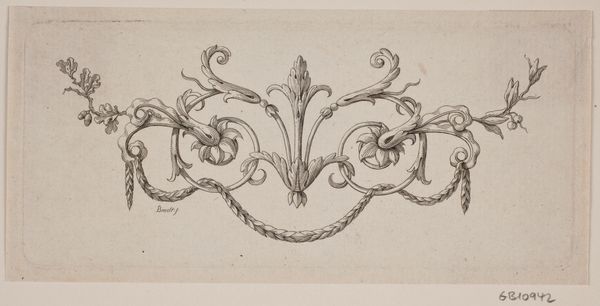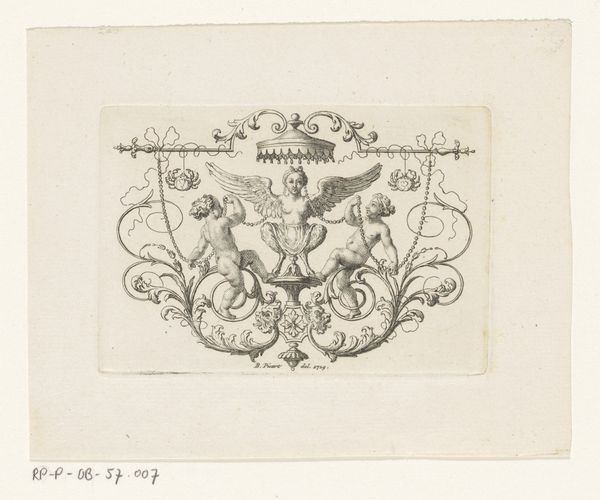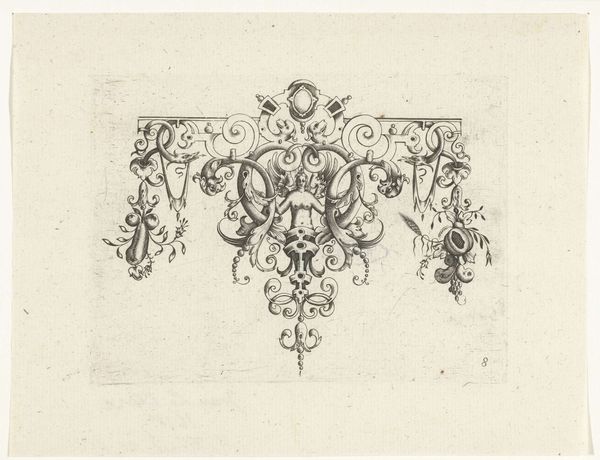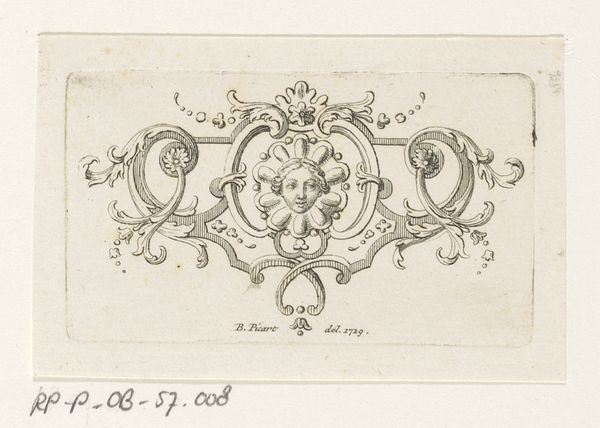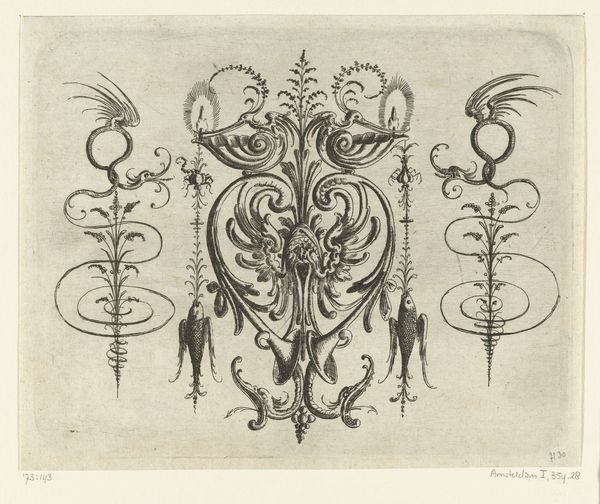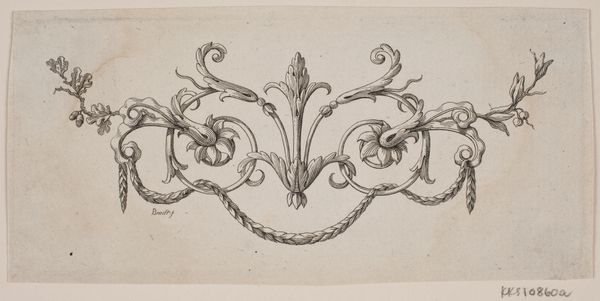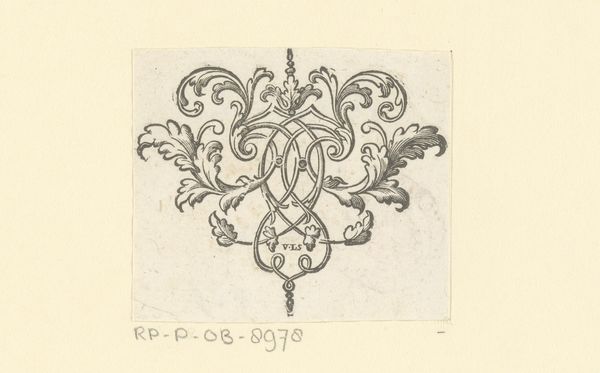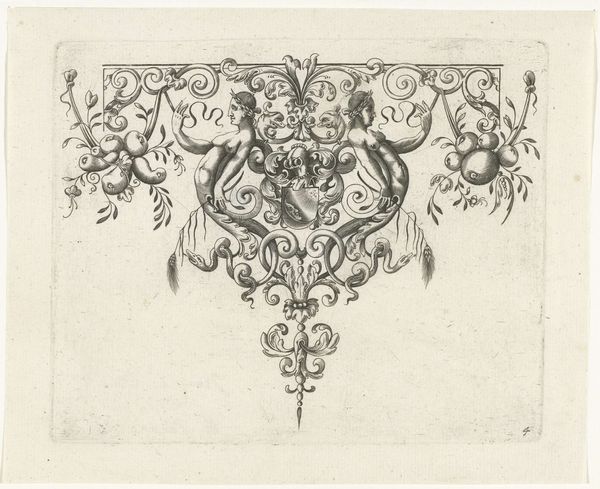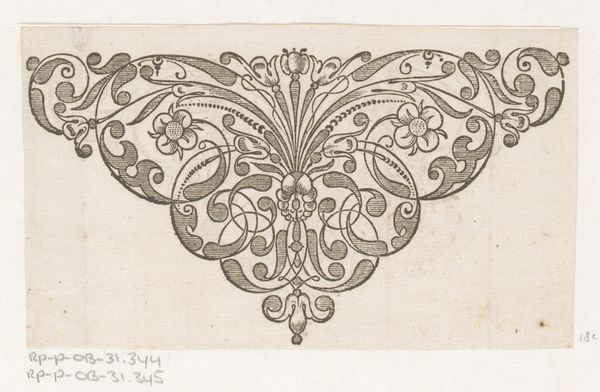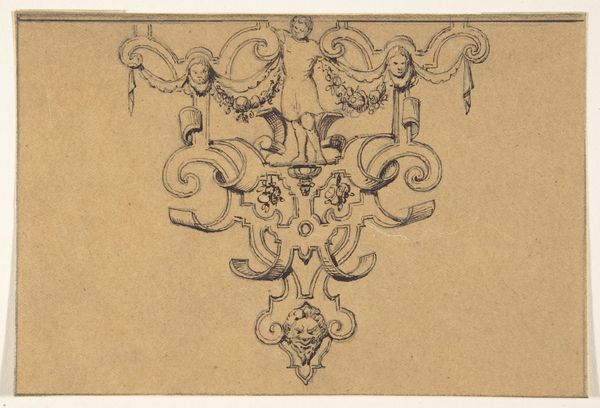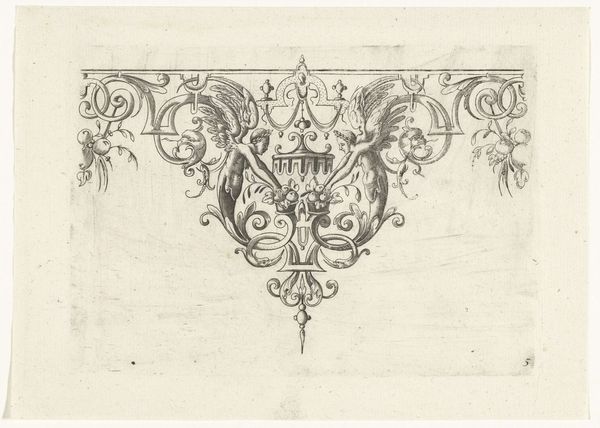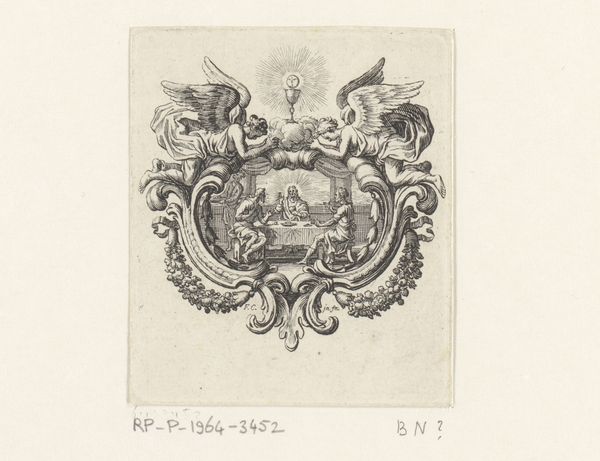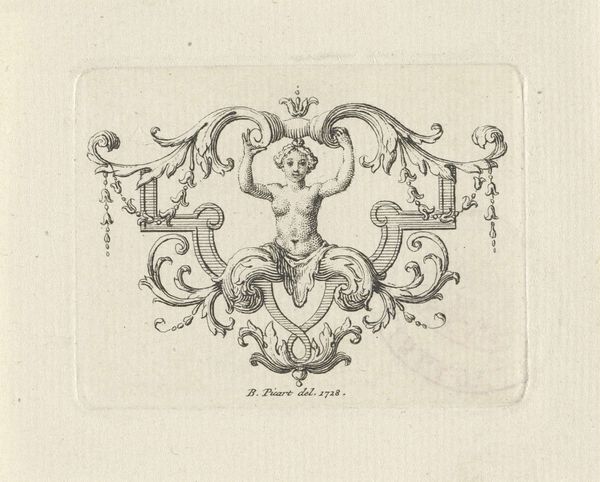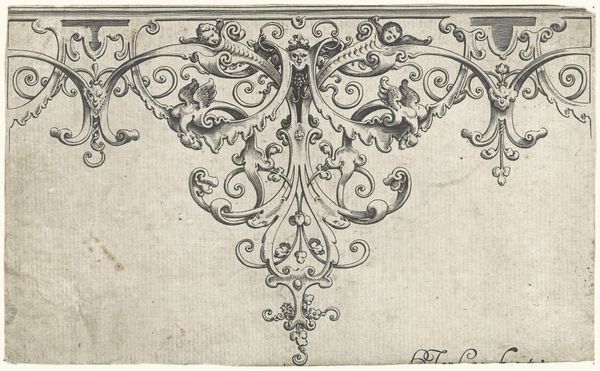
drawing, ornament, engraving
#
drawing
#
ornament
#
baroque
#
figuration
#
line
#
history-painting
#
engraving
Dimensions: height 51 mm, width 72 mm
Copyright: Rijks Museum: Open Domain
Editor: Here we have Bernard Picart's "Ornament met sater" from 1720, currently housed in the Rijksmuseum. It's an engraving, so the lines are really crisp and precise. I'm struck by the way the symmetrical composition feels both playful and slightly menacing because of that central satyr face. What jumps out at you? Curator: Formally, observe how Picart utilizes line – the unwavering precision with which it articulates the baroque ornamentation. Notice the interplay of positive and negative space. The density of the lines towards the center, specifically around the grotesque face of the satyr, creates a focal point. The deliberate contrast directs the eye and orchestrates visual interest. What does this controlled manipulation of line and form communicate? Editor: I see what you mean. The controlled lines really define the satyr’s features, highlighting a rather unsettling gaze. Do you think the rigid structure emphasizes the more chaotic aspects of the satyr's face? Curator: Precisely. The formalized structure serves as a frame, and its inherent tension is compelling. How might we interpret the ornamental forms in relation to structuralist theory? Consider them as signifiers. Each line, each curve, functions as a coded element. Ask yourself: what systems of meaning might these baroque elements be referencing? Editor: So the curls and flourishes aren't just decorative, they’re part of a language, a system of communication through form? The more structured shape on either side of the satyr acts as a sign as well? Curator: Indeed. By analyzing these components—line, shape, composition—as signifiers, we can decode the underlying structure of meaning within the work itself. Disregarding contextual clues allows a purified reading through which we arrive at objective truths present within the work, in and of itself. Editor: That’s a really interesting way to think about it! I'm definitely going to look at engravings differently now, paying more attention to how the lines create both form and meaning. Curator: I hope our discussion proves helpful. Focusing on the structural relationships between constituent parts of art and architecture holds great power to uncover true meaning and pure aesthetics.
Comments
No comments
Be the first to comment and join the conversation on the ultimate creative platform.
